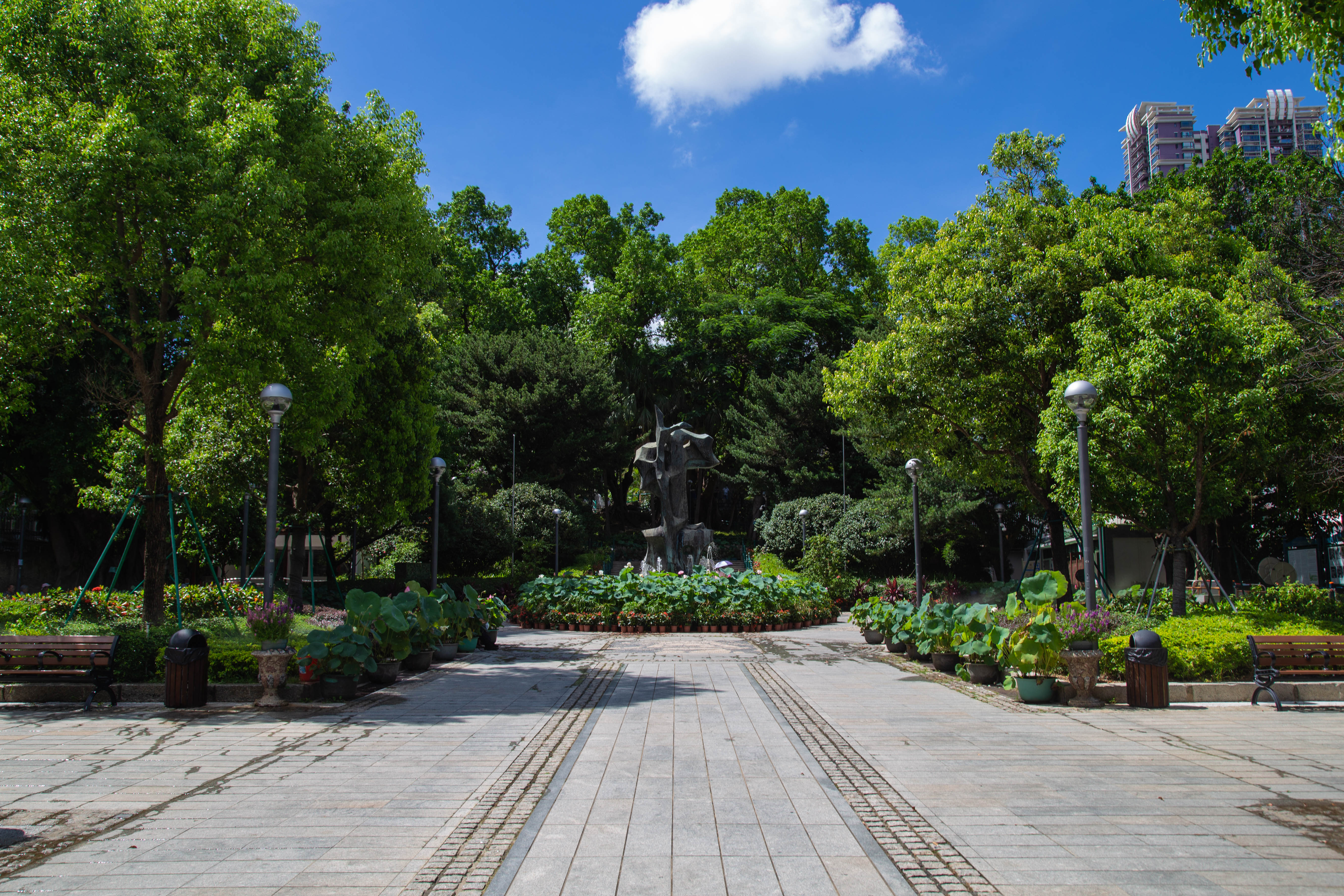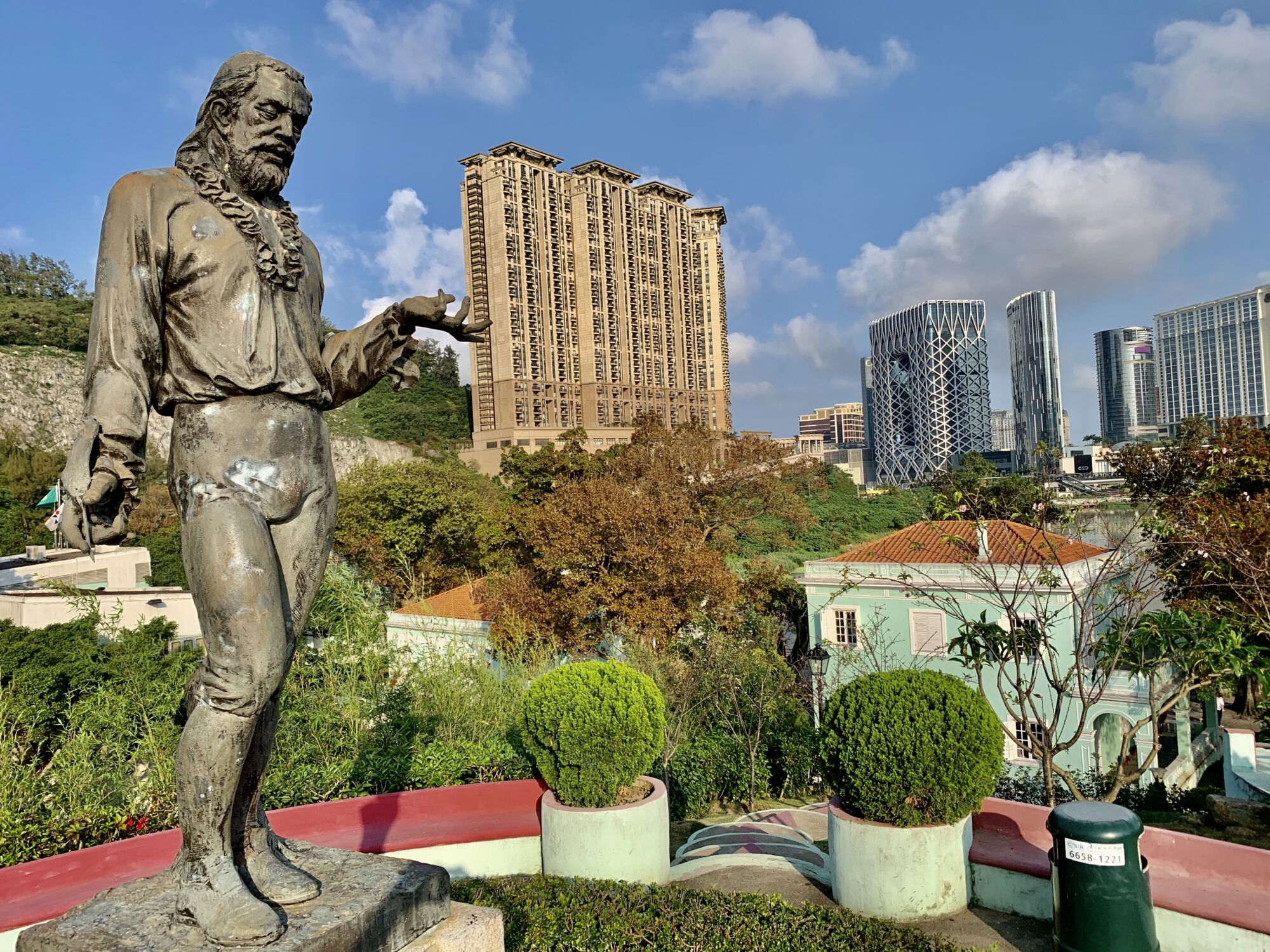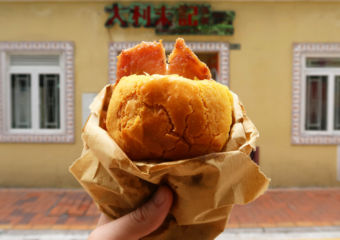If you’re a literature and poetry enthusiast, you might have read Luís Vaz de Camões. Believed to have been born in 1524 or 1525, Camões received international recognition with the publishing of Os Lusíadas, the most complete literary work focusing on the Portuguese Discoveries period. This epic piece is translated into several languages, including Spanish, Russian, French, German, Italian, Deutch, Hungarian, English, Japanese, Danish, Swedish, Concani, and even Esperanto. If you’ve read Os Lusíadas, you are also familiar with the author’s supposed travels, including his time in Macau.
There’s no definitive proof the author was, in fact, in Macau, but there are some elements that point to that being true. Who’s been living in Macau for some time certainly knows about the pilgrimage to the Camões grotto, and the statue of the poet. But do you know why that grotto is so famous? Or that this is where he’s believed to have written his masterpiece? Camões’ statues depict him without an eye and do you know why? This article sheds some light on the life and work of this Portuguese author, who’s believed to have arrived in town with the first batch of Jesuit missionaries.
Traveling to heal a broken heart
There are several areas in town that one should visit when looking to connect with Camões’ history. The section on Macau is filled with nostalgia and gloominess because that’s how the author felt after allegedly having his heart broken twice. According to official records, he was sent to Macau to fill the position of “provider of the dead” (provedor dos defuntos in the original Portuguese). His main task was to take care of the assets and belongings of the dead. However, he’s said to have been arrested for stealing some of these.
But before we go any further, maybe we should go back a bit to understand how the poet ended up in Asia. Camões was born and raised by well-educated and intellectual people, including his parents and uncles. Surrounded by books and culture, he was part of an elite who knew how to read and write, which allowed him to land better jobs.
At a very young age, he started working at the home of a nobleman, Francisco de Noronha, Count of Linhares, and his wife, Violante. He stayed with the family for a long period in which he had an affair with Violante. She married a much older man and decided to have a double life of passion with Camões. Her husband traveled a lot, which allowed the lovers a lot of free time to develop a passionate affair. It all went wrong when the Count got home and discovered about the romance. The affair was over–but the poet kept working at the Linhares’ home, thus maintaining an association with the whole clan, including the couple’s children. Some researchers even argue that Camões was also fond of his good friend, António de Noronha, the son of Count of Linhares. After his romance with Violante, the poet fell in love with one of his daughters, D. Joana.
However, her father didn’t approve of her relationship with a commoner, hence sending her away to get married to a nobleman in India. Unfortunately, the teen never reached her destination because she died, allegedly in a shipwreck on the way to Asia. D. Joana’s terrible fate is believed to have been the major cause for Camões’ decision to depart to India and the Far East. Before embarking on this epic sea trip, the poet was stationed in Morocco to fight as part of the Portuguese army, where he lost one of his eyes in battle.

Camões Garden
Macau: Finding solace in Patane
After spending some years in India, Camões traveled to Macau, where he tried to find some peace and solace amongst the region’s landscape. But what was he doing in the region, so far from home? He was appointed “provider of the dead”, hence dealing with the belongings of the deceased and missing Portuguese in Southeast Asia. To escape the boat’s stench and filth, Camões would walk through the city, especially the harbored area and Patane. He’d put up a net in the trees to rest and write, enjoying the silence alone. Most researchers believe Camões wrote Os Lusíadas in what’s now the Camões Garden. The area remains filled with trees and greenery, as well as the popular grotto, where the author would sit and write for hours on end. His poetry shows deep feelings of nostalgia and great sorrow, proof of his broken heart.
Upon his return to Lisbon, Camões published his epic piece and got a pension from the then king D. Sebastião for his services in name of the Portuguese Crown. The author’s greatness is celebrated every year on June 10, the Day of Portugal, Camões, and the Portuguese Communities. Actually, the origins of June 10 may be directly related to the writer. According to historical records, the first time June 10 was celebrated–as the Day of National Festivities and the Grand Gala–was in 1880 to mark 300 years since Camões’ death.

Camões statue in Carmo Garden, Taipa Village
Every year on this day, children from local schools gather in the garden and pay a pilgrimage to the poet’s bronze bust (by Portuguese artist, Bordalo Pinheiro) situated in the grotto with his name. There’s also a verse of Os Lusíadas in there.
Camões may have fallen in love once more, this time in Asia. Just when his boat was ready to depart from Macau back to Portugal, a local Chinese woman who used to watch him during his moments in the grotto, went to say goodbye. Camões felt a strong connection with her and invited the woman to get in the boat with him. Unfortunately, she too died in a shipwreck. The ship they were in sunk in the Mekong river and she drowned. This is one of the most thrilling episodes of Camões’ life, as he was about to lose his life’s work: according to the legend, Camões almost drowned but kept holding his Os Lusíadas’ precious manuscript while swimming to shore. Thankfully, he was able to save it, thus successfully arriving safely in Lisbon and later publishing his renowned epic collection.
Now that you know a bit more about the life and experiences of Luís Vaz de Camões, you might even see Camões Garden and its surroundings in a different way! Camões Garden isn’t the only place in town where you can find references to this world-renowned poet. Carmo Garden, just a few steps above the Taipa Houses-Museum, also features a full-body statue of Camões, by local sculptor Wong Ka Long.
Camões Garden Praça de Luís de Camões, Macau, www.macaotourism.gov.mo
Jardim do Carmo Avenida de Carlos da Maia, Taipa Village




































